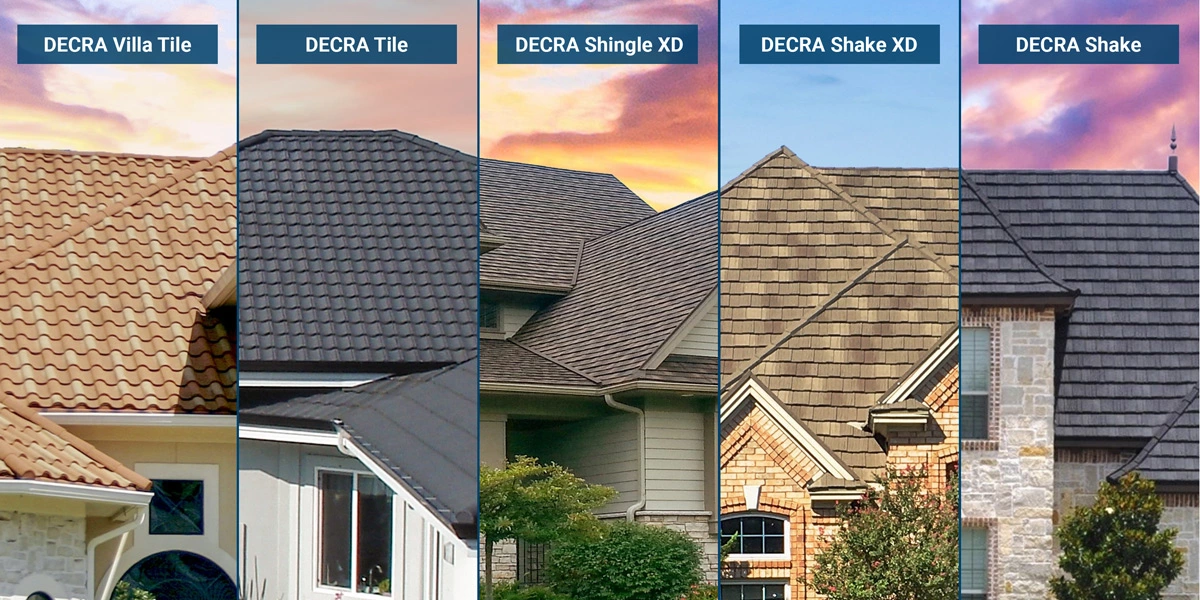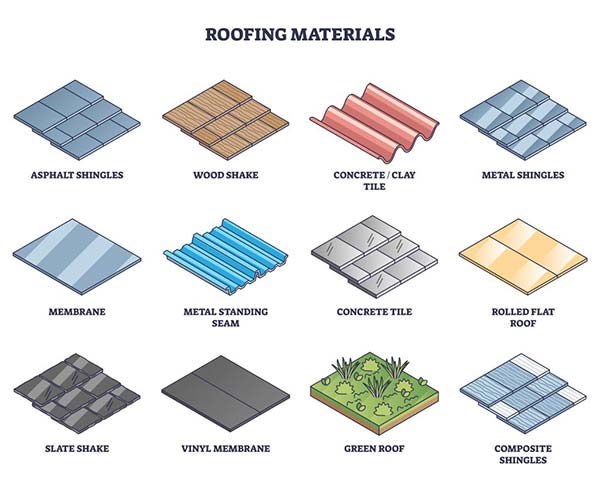A Comprehensive Guide to the Setup Process for Your New Roof
The installation procedure for a new roof covering system calls for careful consideration of numerous variables. From reviewing the roof covering's architectural stability to picking suitable products, each action plays a necessary role in guaranteeing a successful end result. Recognizing the nuances of installation can protect against future problems and improve durability. What are the vital actions one must follow to attain a resilient and dependable roofing system? The response lies in a systematic method that addresses every important aspect.
Understanding Various Roof Products
When choosing a roof, recognizing different roof products is essential for making a notified choice. Different materials use distinctive benefits and downsides, influencing sturdiness, cost, and appearances. Asphalt roof shingles are popular for their cost and ease of installation, making them a typical selection for properties. Metal roof, recognized for its durability and resistance to extreme weather, allures to those looking for toughness. Clay and concrete ceramic tiles give an one-of-a-kind visual and superb insulation but can be larger and extra expensive. Slate roof, celebrated for its natural appeal and outstanding life expectancy, tends to be a costs option needing experienced setup. For environmentally-conscious home owners, green roof systems, which integrate plant life, existing lasting advantages. Understanding these materials enables homeowners to align their choice with budget plan, climate factors to consider, and individual design preferences, inevitably ensuring a roofing option that meets their requirements effectively.
Analyzing Your Roofing system's Architectural Honesty

Examining a roof covering's architectural integrity is crucial for guaranteeing its durability and security. This procedure entails checking the roof covering structure for any signs of weakness, recognizing possible water damages, and establishing the load capacity to support various roof covering materials. Resolving these elements will help maintain the total health and wellness of the roof.
Inspecting Roofing System Structure
Before mounting a brand-new roof, it is crucial to thoroughly examine the roofing system framework to validate its architectural stability. This procedure involves evaluating essential parts such as rafters, trusses, and the total framework style. A competent examiner needs to search for signs of wear, warping, or any architectural shortages that can endanger the new roof covering installment. Furthermore, it is necessary to look for proper load circulation, ensuring that the structure can sustain the weight of the brand-new materials. Any kind of identified issues should be attended to prior to proceeding, as they can result in substantial issues down the line. By prioritizing this inspection, property owners can assure a trustworthy and resilient roof that will withstand the test of time.
Determining Water Damage
Water damage can considerably influence a roofing's structural stability, making it important to identify any type of indicators early in the examination procedure. Homeowners must seek discoloration or spots on wall surfaces and ceilings, which might show leaks. Sagging locations in the roof covering or ceilings suggest collected dampness that can jeopardize architectural components. Examining the attic is necessary; mold and mildew development and damp insulation are indications of water intrusion. Furthermore, taking a look at the roof surface area for missing out on tiles, cracks, or corrosion on steel elements can reveal potential vulnerability to water damages. Normal analyses can assist in very early discovery, permitting timely fixings that protect the roof's integrity and prevent substantial damage. Attending to these indications quickly is vital for keeping a safe and sturdy roof.
Assessing Lots Capability
Evaluating the tons ability of a roofing system is vital for guaranteeing its architectural stability and longevity. This evaluation includes examining the materials utilized in the roofing's building and construction, the underlying framework, and the total design. Factors such as snow build-up, wind load, and the weight of roof covering materials need to be considered to establish whether the framework can support extra loads. An architectural engineer can offer important understandings, performing estimations based on local building ordinance and environmental problems. Routine assessments and upkeep likewise play a vital role in recognizing potential weak points. By thoroughly examining lots capability, house owners can avoid expensive problems and ensure that their brand-new roof is resilient and secure for many years ahead.
Planning and Readying for Installation
Efficient preparation and prep work are important steps before setting up a roof - pacific mo roofing companies. This includes assessing certain roof covering demands and picking the proper products that best fit those requirements. A comprehensive understanding of these elements can greatly influence the success and long life of the roofing project
Assessing Your Roofing Needs
How can one assure that their roof job meets both practical and visual needs? A comprehensive analysis of roofing demands is crucial. This involves analyzing the current roof covering's condition, recognizing any type of damage, and identifying architectural integrity. Homeowners need to consider their climate, as weather condition problems substantially affect roof covering material choices and toughness. Furthermore, examining architectural style and area looks is vital for keeping residential property worth and charm. Understanding individual choices and spending plan restrictions further aids in making informed choices. Lastly, talking to roofing experts can supply valuable understandings and recommendations tailored to particular demands. By carefully assessing these elements, home owners can guarantee their roofing project lines up with their distinct demands and enhances their residential property's total look.
Choosing the Right Products
When selecting materials for a roof project, it is necessary to take right into account both functionality and visual appeals to guarantee a successful installation. Home owners ought to take into consideration the climate you can check here of their area, as particular materials do much better under details climate condition. Steel roofing systems offer sturdiness in locations susceptible to heavy snowfall, while asphalt roof shingles might be more cost-effective for milder environments. In addition, the style of the home plays a substantial duty; products must match the building design to enhance curb charm. Sustainability is an additional factor; environment-friendly choices like solar ceramic tiles or redeemed timber can decrease environmental influence. Ultimately, selecting the appropriate materials entails balancing these components to secure a long-lasting and aesthetically attractive roof covering system.
Security Precautions During Installation
Ensuring safety during roof installment requires precise focus to detail and adherence to established procedures. Most importantly, employees should don suitable individual protective tools (PPE), consisting of safety helmets, handwear covers, and non-slip footwear, to reduce injury dangers. Scaffolding and ladders should be firmly placed and maintained to offer stable work surfaces. It is important to inspect the roofing system framework for weaknesses or damages prior to beginning work, as this can prevent mishaps later on.
Furthermore, installers must be learnt autumn protection techniques, consisting of making use of harnesses and guardrails. Climate problems additionally play a substantial role; job should be held off during high visit this site winds, rain, or tornados. All devices and materials should be arranged and safeguarded to stop tripping dangers. By prioritizing these safety and security precautions, the danger of accidents can be significantly decreased, making sure a more secure working atmosphere for all associated with the roof installment procedure.
Step-by-Step Installment Process
An effective roof setup includes a series of thoroughly prepared steps that assure both performance and quality. Initially, the old roofing material need to be gotten learn the facts here now rid of, making certain the underlying framework is intact. Next off, any needed repair work to the roofing deck are done, reinforcing its stability. Following this, a dampness obstacle is mounted to safeguard against water seepage. The selection of roof covering material, such as tiles or steel panels, is after that set out, beginning from the eaves and proceeding upwards. Each piece is protected meticulously to hold up against weather. Air flow systems are incorporated to promote airflow and protect against wetness accumulation. Flashing is mounted around smokeshafts and vents to more protect against leaks. The setup is assessed for conformity with regional structure codes and maker specifications. This complete method guarantees a durable and trusted roofing system that meets property owner expectations.
Completing Touches and Inspections

When the setup of all parts is complete, an extensive examination complies with. This includes monitoring for proper positioning, safe fastening, and adequate securing of joints. Inspectors additionally examine air flow systems to ensure peak airflow and wetness monitoring.
Additionally, any kind of particles or leftover materials from the installation have to be removed from the roofing system and bordering area. By carefully addressing these details, home owners can assure that their brand-new roofing system is not only practical yet additionally aesthetically enticing, establishing the stage for long-term efficiency and longevity.
Upkeep Tips for Your New Roofing
While numerous property owners might overlook the importance of regular roof upkeep, developing a regimen can greatly expand the lifespan and efficiency of a brand-new roof system. Normal assessments need to be performed at the very least twice a year, ideally in spring and autumn, to recognize any kind of prospective issues early. Property owners should look for loosened or absent roof shingles, indicators of wear, and particles build-up in valleys and rain gutters.
Cleaning the roofing surface area and gutters is important to avoid water damages and mold and mildew growth. Additionally, cutting overhanging branches can reduce damage triggered by falling debris. It is likewise a good idea to monitor indoor ceilings for indications of leakages or water discolorations, which might indicate roof covering issues.
Engaging a professional for yearly inspections ensures that any underlying problems are resolved promptly, protecting the stability of the roof system and offering peace of mind for property owners.

Frequently Asked Questions
How Long Does the Roofing Setup Process Usually Take?
The roofing installment process usually takes one to 3 days, depending upon the task's dimension and complexity. Aspects such as weather and the kind of roofing product can likewise influence the general timeline.
What Permits Are Needed for Roof Covering Setup?
The called for authorizations for roofing installation usually include building permits, architectural authorizations, and, in some areas, electric or plumbing authorizations. Laws might vary based on regional codes, demanding examination with neighborhood authorities for particular demands.
Can I Stay At Home During the Installment?
Homeowners can remain during roof setup, however it might be troublesome due to sound and disruptions. Professionals advise remaining out of workplace for safety and to permit the crew to do their tasks effectively.
Will My Insurance Coverage Cover the Roof Covering Setup Prices?
Insurance protection for roof installment expenses differs based on private policies and conditions. Homeowners should consult their insurance policy copyright to figure out eligibility for protection, including elements like damages seriousness and policy specifications relating to roof substitute.
What Takes place if It Drizzles Throughout Setup?
If it rainfalls throughout installation, employees may stop progress to stop damage to products and ensure safety. Rain can also delay completion, needing added time for drying and prospective re-evaluation of the roof job.
The setup procedure for a new roofing system requires mindful consideration of various elements. When selecting a roof system, recognizing various roof products is essential for making a notified choice. When choosing products for a roofing job, it is crucial to take into account both performance and aesthetic appeals to guarantee a successful installment. Making certain safety throughout roofing system installment requires careful attention to information and adherence to developed methods. A successful roofing system installation entails a collection of meticulously planned steps that ensure both effectiveness and top quality.